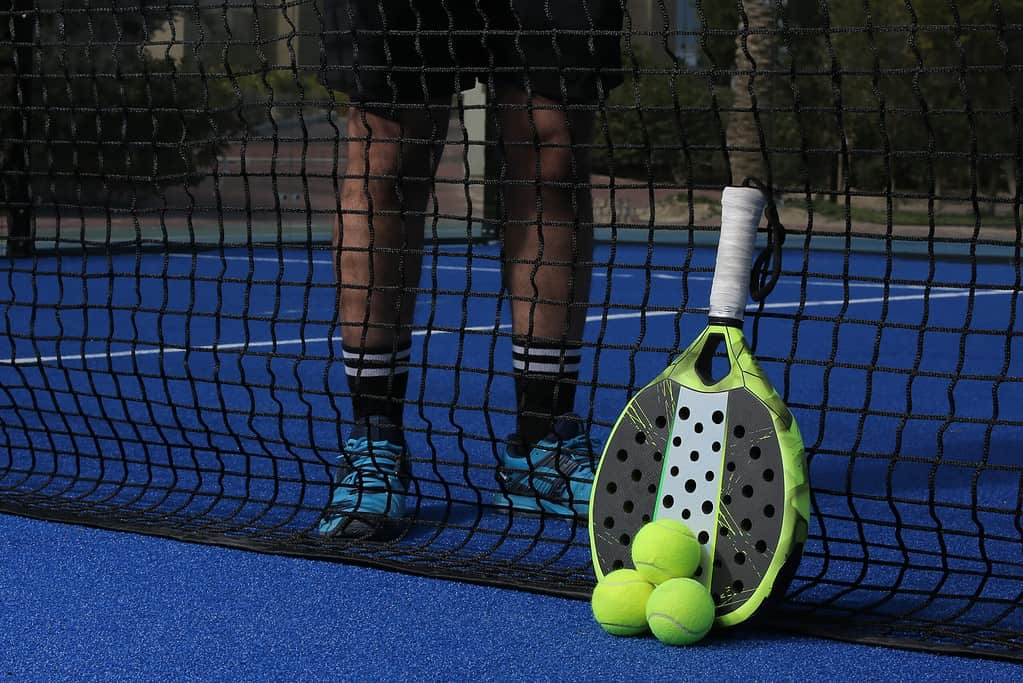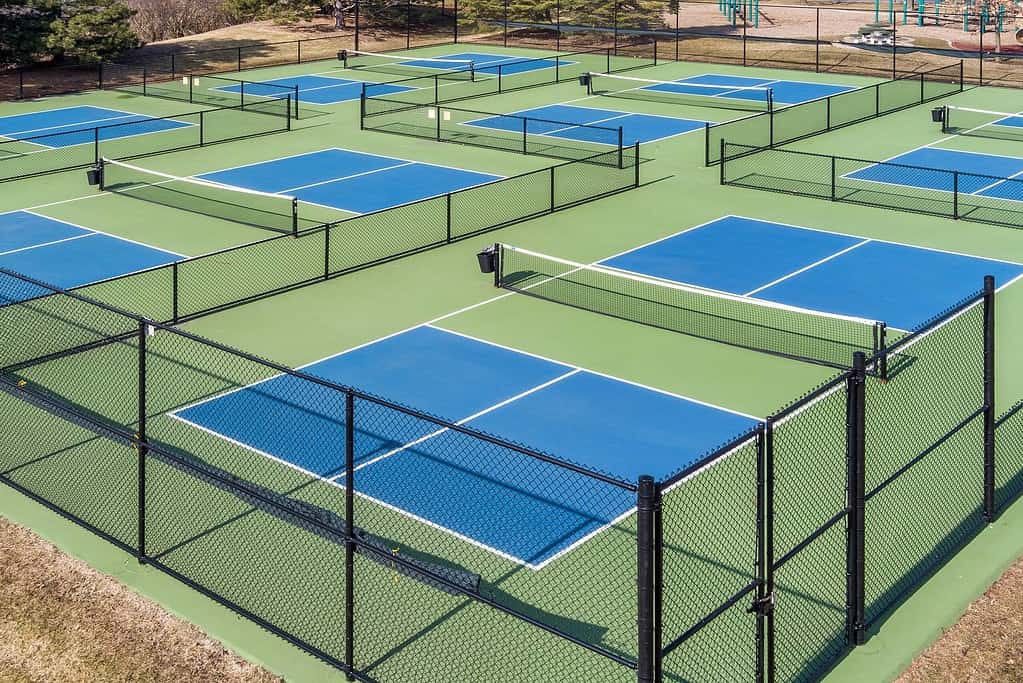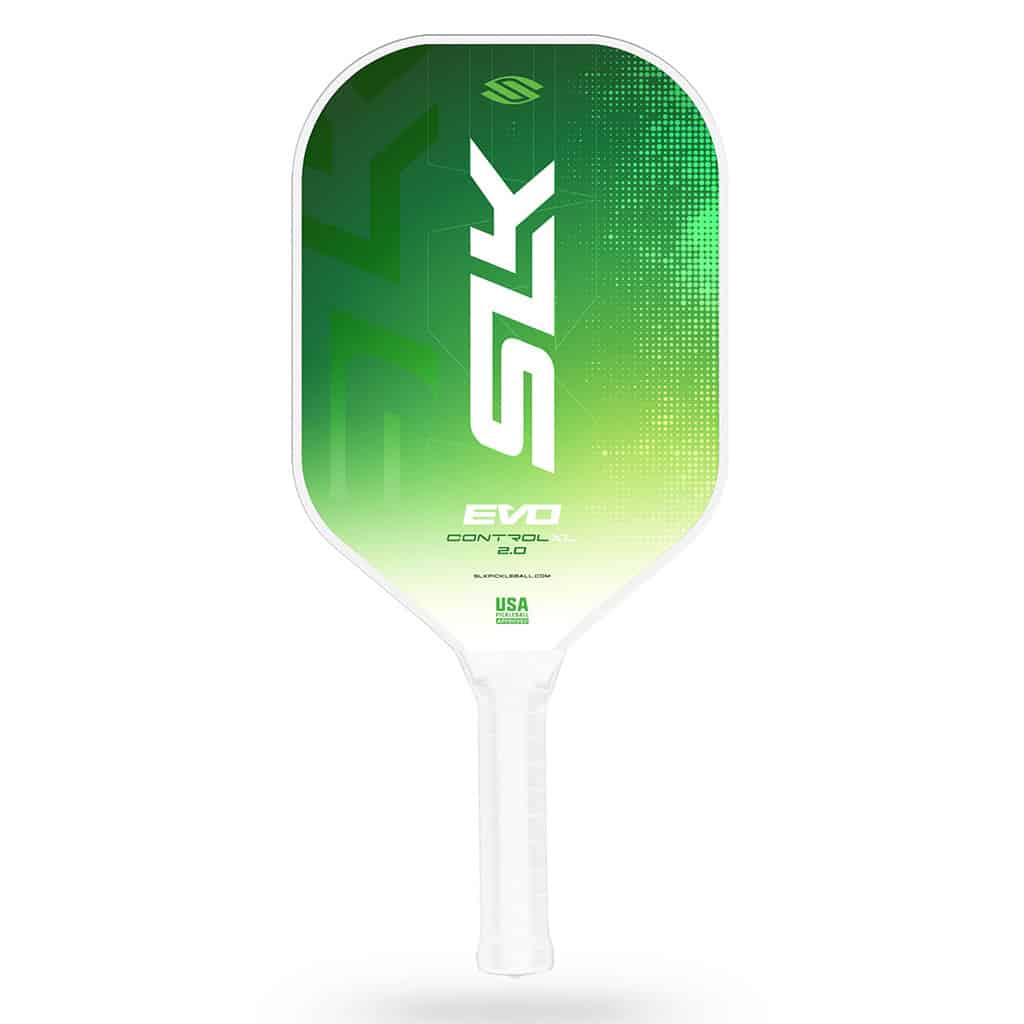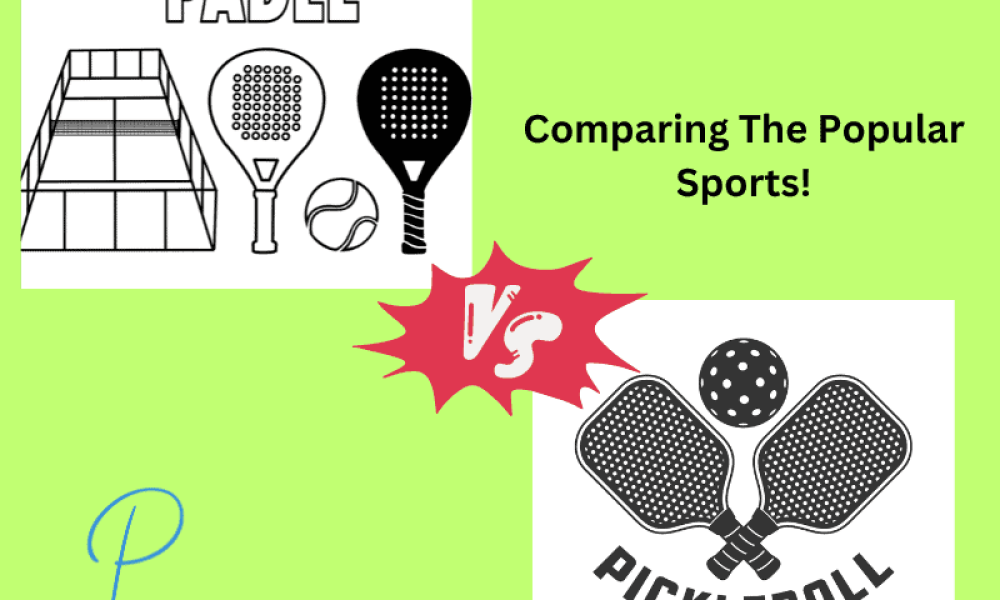If you like racquet sports, it seems all you hear about lately is padel and pickleball, two rapidly rising sports that are capturing global interest. Why are these two sports, created just 4 years apart in seperate parts of the world, becomming so popular?
In this blog post, we’ll take a look at the distinct differences between padel vs pickleball. We’ll be examining their rules, gear, gameplay, and beyond.
Whether you’re an experienced athlete or an eager newcomer, join us on this journey as we take a look at these two invigorating sports and reveal which one could potentially be your next beloved hobby. Or maybe both?
Let’s get started.
Padel vs Pickleball: An Overview of Padel
Padel, a fascinating racket sport that skillfully combines elements of tennis and squash, has an intriguing history that dates back to the late 1960s.
The game was invented by Enrique Corcuera, a Mexican businessman who sought to create a unique sport suitable for his limited-space property in Acapulco. By adapting the traditional tennis court and incorporating walls for ball rebounds, Corcuera laid the foundation for what would eventually become Padel.
The sport quickly gained momentum when Spanish royalty, particularly Prince Alfonso de Hohenlohe, became enamored with the game during a visit to Mexico.
Upon returning to Spain, he built the first Padel court in Marbella, sparking a surge in the sport’s popularity throughout the country. As Padel swept across Spain, it eventually reached Argentina, where it found an eager and enthusiastic audience.
Throughout the years, Padel has continued to evolve and expand, with more than six million players now actively participating worldwide and more and more padel courts popping up everywhere. The sport has also garnered international recognition, with the establishment of organizations like the International Padel Federation (FIP) in 1991 and the Padel Pro Tour in 2005.
Today, Padel remains a beloved sport for its engaging gameplay, social nature, and ability to be enjoyed by players of all skill levels.
Padel Court and Equipment

Padel is a unique and engaging sport, distinguished by its specialized enclosed court design and equipment.
The court, measuring 20 meters in length and 10 meters wide, is surrounded by walls made of glass or a metallic mesh. These walls, which encompass the entire court, serve as an integral part of the game, allowing players to use them for rebounds similar to squash.

The playing surface is typically composed of artificial grass or a synthetic material, providing optimal grip and facilitating smooth ball movement. A net divides the court into two equal halves, much like tennis courts, and the scoring system is also derived from tennis.
When it comes to equipment, Padel uses a solid racket without strings, usually made from composite materials like carbon fiber or fiberglass. The rackets have perforations to reduce air resistance, and their design helps players generate power and control while striking the ball. Padel rackets are smaller and lighter than traditional tennis rackets, making them easy to maneuver during gameplay.
The Padel ball is similar to a tennis ball but with slight differences. It has a slightly lower pressure, resulting in a softer bounce, and also slightly smaller, which complements the fast-paced nature of the game.
Players typically wear comfortable athletic clothing and specialized Padel shoes designed for optimal traction on the padel courts surface.
Together, the unique enclosed court and carefully designed equipment make Padel an exciting and dynamic sport that challenges players’ physical and strategic abilities.
Gameplay and Rules
The rules for Padel are relatively simple to grasp, making it accessible for players of all skill levels.
- Teams: Padel is played in doubles, with each team consisting of two players on either side of the net.
- Scoring: The scoring system is the same scoring system as tennis, using a point-based structure (15, 30, 40, and game) and requiring one team to win six games to claim a set. A match is typically best-of-three sets, with a tiebreaker played at six games all in a set.
- Serving: The server must stand behind the service line, between the center mark and the sideline. The serve must be underhand, with the ball being struck below waist level. The ball must bounce within the opponent’s service box diagonally opposite the server. Players are allowed two attempts at a valid serve.
- Ball in play: Once the ball is in play, teams can hit it directly over the net or use the surrounding walls for rebounds. The ball can bounce off the ground once and may touch the walls any number of times, but it must always land within the opponents’ court boundaries.
- Faults: A fault occurs when the server fails to execute a valid serve, the ball bounces twice on the ground, or the ball lands outside the court boundaries. Hitting the ball into the net or touching the net during play also results in a fault.
- Volleys: Players can volley the ball (hitting it before it bounces) as long as they are not within the designated no-volley zone, which extends from the net to the service line.
- Change of sides: Teams switch sides after every odd-numbered game, ensuring that both teams experience the same court conditions during a match.
These fundamental rules, combined with the unique court design and equipment, make Padel an exhilarating sport that encourages teamwork, strategy, and athleticism.
Overview of Pickleball

Pickleball has a fascinating history that dates back to the summer of 1965. The sport was invented on Bainbridge Island, Washington, by three friends – Joel Pritchard, Bill Bell, and Barney McCallum – who sought to create a fun and engaging game for their families to play together during a weekend gathering.
Legend has it that the trio improvised with available equipment, using ping-pong paddles, a perforated plastic ball, and a badminton court in Pritchard’s backyard to develop the initial version of the game.
The name “pickleball” has two possible origins.
Some believe it was derived from the term “pickle boat,” which refers to the slowest boat in a competitive race or a boat crewed by leftover or inexperienced rowers. This theory suggests that since pickleball is a combination of various sports, it resembles a “pickle boat” crew made up of players from different backgrounds.
Another popular theory attributes the name to the Pritchards’ family dog, Pickles, who would chase after the ball during games, although this story has been debunked by the inventors themselves.
As pickleball gained popularity among friends and neighbors, its creators refined the rules and developed standardized equipment. The first pickleball tournament took place in 1976 on Bainbridge Island, and since then, the sport has grown exponentially in the United States and around the world.
Today, pickleball is played in schools, community centers, and dedicated courts, attracting players of all ages and skill levels. The sport’s governing body, the USA Pickleball Association (USAPA), was established in 1984 to promote the growth and development of the game. Thanks to the dedication of its early pioneers and the enthusiasm of its players, pickleball has evolved from a backyard pastime into a widely recognized and celebrated sport.
Pickleball Court and Equipment

The pickleball court is a rectangular playing surface with dimensions of 20 feet in width and 44 feet in length, sharing similarities with a badminton court in terms of layout. A net divides the court into two equal halves, standing at a height of 36 inches at the sidelines and slightly lower at 34 inches in the middle. The court features clearly marked lines for service areas, non-volley zones, and boundaries.
A distinctive feature of the pickleball court is the “kitchen” or “non-volley zone,” which is a seven-foot area extending from the net on both sides. Players must avoid volleying (hitting the ball in the air) within this zone, introducing an element of strategy to the game. The serving area is situated behind the baseline, and players serve diagonally across the court towards the opponent’s service box.
Pickleball equipment includes a perforated plastic ball, similar to a wiffle ball, and paddles constructed from composite materials or wood. The ball is lightweight, and its holes enable it to move through the air at a slower pace than a tennis ball, making it easier to control.
Pickleball paddles are larger than table tennis paddles but smaller than tennis racquets, offering an optimal balance between power and precision. Paddles come in various shapes, sizes, and materials, with some featuring specialized cores to enhance performance.

Players typically wear athletic clothing and non-marking court shoes to ensure comfort and safety during gameplay. Some may also opt for protective gear such as eyewear or gloves for added protection.
Overall, the pickleball court and equipment are designed to facilitate an enjoyable and competitive experience for players of all skill levels.
Gameplay and Rules
Pickleball is governed by a set of rules that make it an engaging and accessible sport for players of all ages and skill levels. Here’s an overview of the essential rules:
- Serving: The game begins with a serve, which must be executed underhand, making contact with the ball below the waist. The server must have both feet behind the baseline, and the serve should be made diagonally across the court, landing within the opponent’s service box. Only one serve attempt is allowed, and if the serve is unsuccessful, the serve switches to the other side. In doubles play, each team member serves before the serve switches to the opposing team.
- Double Bounce Rule: After the serve, each side must let the ball bounce once before hitting it, meaning the receiving team allows the ball to bounce before returning it, and the serving team allows the ball to bounce before continuing the rally. This rule encourages longer rallies and strategic play.
- Non-Volley Zone: Also known as the “kitchen,” this is the seven-foot area extending from the net on both sides of the court. Players cannot volley (hit the ball in the air) within this zone, but they can step into the zone to play the ball after it has bounced. If a player volleys the ball while standing in the non-volley zone or if their momentum carries them into the zone after a volley, it results in a fault.
- Scoring: Only the serving team scores points either when the opposing team commits a fault or they are unable to return it. A fault may occur when a player fails to return the ball within the court boundaries, hits the ball into the net, or violates the non-volley zone rules. Games are typically played to 11 points, but they must be won by a margin of at least two points.
- Doubles Play: In doubles, players must maintain their serving order throughout the game, and each player serves before the serve switches to the opposing team. When the first server loses their serve, their partner becomes the server. After both players on the serving team have lost their serves, the serve switches to the other team.
These are just a few of the fundamental rules that govern pickleball gameplay. As players gain experience, they will develop a deeper understanding of the sport’s nuances and strategies, making it an enjoyable and competitive game for all.
Padel vs Pickleball: Similarities and Differences
Padel and pickleball are two racquet sports that have gained worldwide popularity. However, they differ in various aspects such as court size, equipment used, gameplay rules, and physical demands.
Court and Equipment Comparison
The padel court is larger than a pickleball court and enclosed by walls on all sides. Padel uses solid rackets without strings while pickleball uses paddles. The balls used in both games also vary; padel balls are similar to tennis balls but with less pressure, whereas pickleballs resemble whiffle balls.
Physical Demands and Skill Requirements
Padel requires agility, coordination, and tactical skills given its complex playing area involving walls. On the other hand, pickleball involves more endurance during long rallies but has simpler tactics, making it easier for beginners.
Popularity and Accessibility
In recent years, both padel and pickleball have gained significant traction globally. Padel, which originated in Mexico, has spread across Europe with Spain leading the way in popularity. Pickleball has also been gaining traction internationally, particularly in the US and Asia. On the other hand, pickleball was born in the United States and has seen a rapid rise domestically.
Global Popularity
The World Padel Tour attracts players from all over the world, showcasing top-level competition. Similarly, Pickleball’s US Open Championship draws competitors nationally and internationally every year. These tournaments are a testament to the growing popularity of these sports.
Accessibility and Community
The accessibility of these sports contributes to their growing popularity as well. Both padel and pickleball courts are relatively easy to set up, making them accessible for all ages and skill levels. Padel clubs and pickleball leagues are sprouting up around neighborhoods, providing opportunities for social interaction along with healthy competition.
If you’re looking for an exciting new hobby or just want to stay active outdoors, consider giving padel or pickleball a try. Both sports offer unique challenges that can help improve your agility, endurance, and strategy-making skills. Plus, they’re just plain fun!
FAQs
What is the American name for padel?
In America, padel is known as ‘Platform Tennis’.
What distinguishes padel from pickleball?
The main differences between padel and pickleball are their court sizes, equipment, and scoring systems. Learn more here.
What is paddle tennis?
Paddle tennis is a relatively new sport that combines elements of tennis and ping pong, similar to pickleball.
Can you play pickleball on a padel court?
No, due to differences in court dimensions and net height, it’s not recommended to play pickleball on padel courts or a paddle tennis court.
Conclusion
If you’re looking for a fun, engaging way to stay active and socialize, both padel and pickleball are excellent choices. Each sport offers unique gameplay mechanics, strategies, and physical demands that cater to different preferences.
With clubs and leagues popping up all over the world, these sports are becoming increasingly accessible to everyone. Racket sports are on the rise, and these two sports are leading the charge. So grab a racket and join in on the fun!


